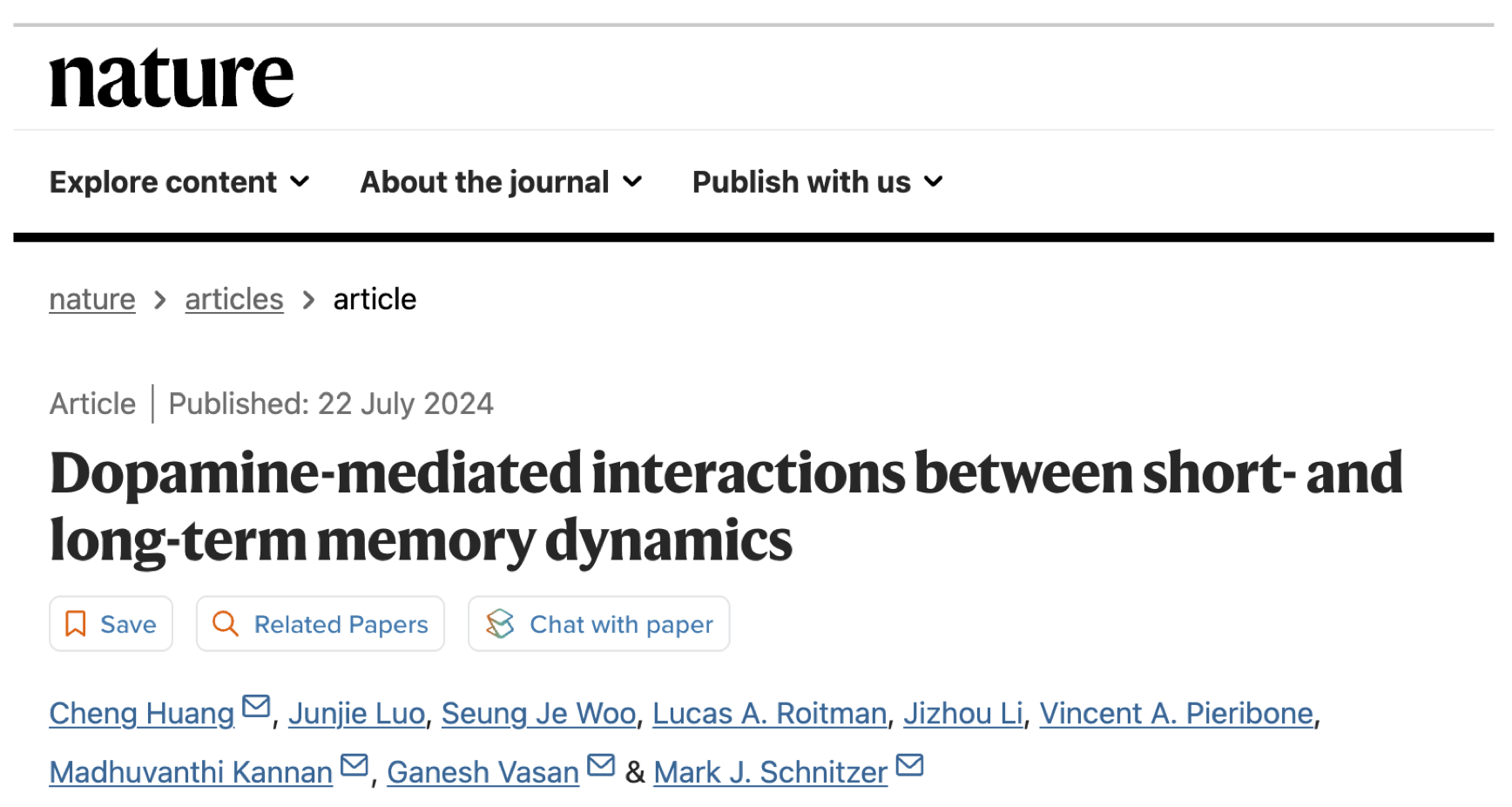Journal article published in Nature

Reference
Cheng Huang, Junjie Luo, Seung Je Woo, Lucas A. Roitman, Jizhou Li, Vincent A. Pieribone, Madhuvanthi Kannan, Ganesh Vasan, and Mark J. Schnitzer. “Dopamine-mediated interactions between short-and long-term memory dynamics.” Nature (2024).
Abstract
In dynamic environments, animals make behavioral decisions based on the innate valences of sensory cues and information learnt about these cues across multiple timescales1–3. However, it remains unclear how the innate valence of a sensory stimulus affects acquisition of learnt valence information and subsequent memory dynamics. Here we show that in the Drosophila brain, interconnected short- and long-term memory units of the mushroom body jointly regulate memory via dopamine signals that encode innate and learnt sensory valences. Through time-lapse, in vivo voltage-imaging studies of neural spiking in >500 flies undergoing olfactory associative conditioning, we found that protocerebral posterior lateral 1 dopamine neurons (PPL1-DANs)4 heterogeneously and bi-directionally encode innate and learnt valences of punishment, reward, and odor cues. During learning, these valence signals regulate memory storage and extinction in mushroom body output neurons (MBONs)5. In initial conditioning bouts, PPL1-γ1pedc and PPL1-γ2α’1 neurons control short-term memory formation, which weakens inhibitory feedback from MBON-γ1pedc>α/β to PPL1-α’2α2 and PPL1-α3. During further conditioning, this diminished feedback allows these two PPL1-DANs to encode the net innate plus learnt valence of the conditioned odor cue, which gates long-term memory formation. A computational model constrained by the fly connectome6,7 and our spiking data explains how dopamine signals mediate the circuit interactions between short- and long-term memory traces, yielding predictions that our experiments confirm. Overall, the mushroom body achieves flexible learning via the integration of innate and learnt valences within parallel learning units sharing feedback interconnections. This hybrid physiologic-anatomic mechanism may be a general means by which dopamine regulates memory dynamics in other species and brain structures, including the vertebrate basal ganglia.
